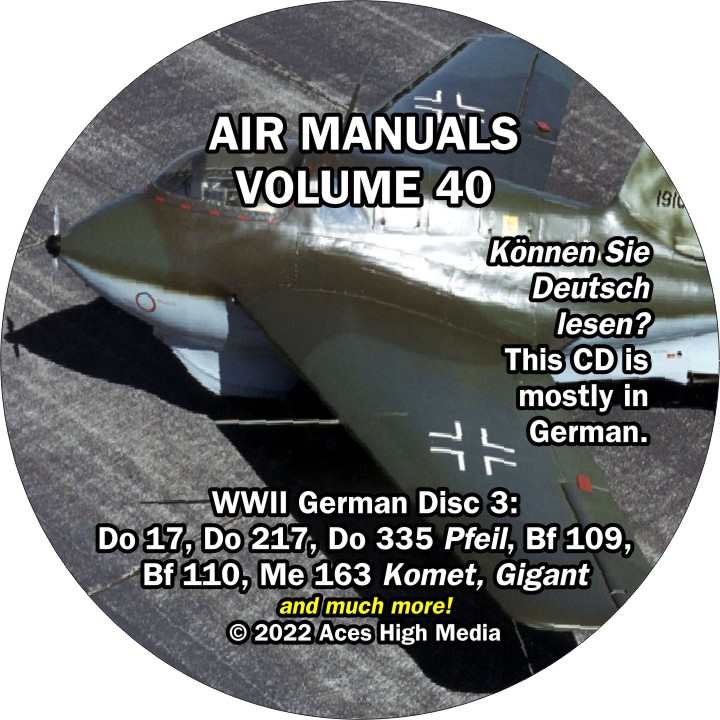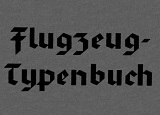Aces High Air Manuals
Volume 40: WWII German Disc 3
Sprechen sie deutsch? The PDF contents of this CD are mostly in German.
Dornier
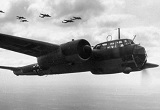
|
Dornier Do 17P Airplane handbook (German)
294 pages
The Dornier Do 17, sometimes referred to as the Fliegender Bleistift ("flying pencil"), was a light bomber of Nazi Germany during World War II. It was produced by Claudius Dornier's company, Dornier Flugzeugwerke. The aircraft was designed as a Schnellbomber ("fast bomber"), a light bomber which, in theory, would be so fast that it could outrun defending fighter aircraft.
|

|
Dornier Do 217 E-1, E-3 Operating Instructions (German)
112 pages
Designed in the early 1930s, it was one of the three main Luftwaffe bomber types used in the first three years of the war. The Do 17 made its combat debut in 1937 during the Spanish Civil War, operating in the Condor Legion in various roles. Along with the Heinkel He 111 it was the main bomber type of the German air arm in 1939–1940. The Dornier was used throughout the early war, and saw action in significant numbers in every major campaign theatre as a front line aircraft until the end of 1941, when its effectiveness and usage was curtailed as its bomb load and range were limited.
|

|
Dornier Do 217 E-1 Brief Operating Instructions (German)
104 pages
The Dornier Do 217 was a bomber used by the German Luftwaffe during World War II as a more powerful version of the Dornier Do 17, known as the Fliegender Bleistift (German: "flying pencil"). Designed in 1937 and 1938 as a heavy bomber but not meant to be capable of the longer-range missions envisioned for the larger Heinkel He 177, the Do 217's design was refined during 1939 and production began in late 1940. It entered service in early 1941 and by the beginning of 1942 was available in significant numbers.
|

|
Dornier Do 217 J Operating Instructions (German)
107 pages
The Dornier Do 217 had a much larger bomb load capacity and had much greater range than the Do 17. In later variants, dive bombing and maritime strike capabilities using glide bombs were experimented with, considerable success being achieved. Early Do 217 variants were more powerful than the contemporary Heinkel He 111 and Junkers Ju 88, having a greater speed, range and bomb load. Owing to this it was called a heavy bomber rather than a medium bomber. The Do 217 served on all fronts in all roles. On the Eastern Front and Western Front it operated as a strategic bomber, torpedo bomber and reconnaissance aircraft. It also performed tactical operations, either direct ground assault or anti-shipping strikes during the Battle of the Atlantic and Battle of Normandy. The Do 217 was also converted to become a night fighter and saw considerable action in the Defence of the Reich campaign until late in the war.
|

|
Dornier Do 217 K-1 Operating Instructions (German)
117 pages
The type also served in anti-shipping units in the Mediterranean, attacking Allied convoys and naval units during the Battle of the Mediterranean. It was in the Mediterranean that the Do 217 became the first aircraft in military aviation history to deploy a form of precision-guided munition in combat, in the form of the Fritz-X radio-guided, free-fall bomb, which led to the sinking of the Italian battleship Roma in 1943. After the end of the war, at least one Dornier Do 217 continued in military operational service with the Swiss Air Force until 1946.
|
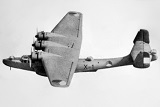
|
Dornier Do 24 K Flying Boat Handbook (German)
265 pages
The Dornier Do 24 is a 1930s German three-engine flying boat designed by the Dornier Flugzeugwerke for maritime patrol and search and rescue. According to Dornier records, some 12,000 people were rescued by Do 24s during its flying career. A total of 279 were built among several factories from 1937 to 1945.
|
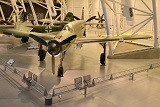
|
Dornier Do 335 A-0, A-1, A-10 Pfeil Brief description with general instructions for operation (German)
68 pages
The Dornier Do 335 Pfeil ("Arrow") was a World War II heavy fighter built by the Dornier company. The two-seater trainer version was also called Ameisenbär ("anteater"). The Pfeil's performance was much better than other twin-engine designs due to its unique "push-pull" layout and the much lower aerodynamic drag of the in-line alignment of the two engines. It was Germany's fastest piston-engined aircraft of World War II. The Luftwaffe was desperate to get the design into operational use, but delays in engine deliveries meant only a handful were delivered before the war ended.
Photo credit: Guinnog@wikimedia (CC BY-SA 3.0) |
Messerschmitt
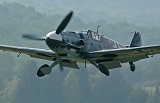
|
Messerschmitt Bf 109 D Brief manual (German)
30 pages
The Messerschmitt Bf 109 is a German World War II fighter aircraft that was the backbone of the Luftwaffe's fighter force. The Bf 109 first saw operational service in 1937 during the Spanish Civil War and was still in service at the dawn of the jet age at the end of World War II in 1945. It was one of the most advanced fighters of the era, including such features as all-metal monocoque construction, a closed canopy, and retractable landing gear. It was powered by a liquid-cooled, inverted-V12 aero engine. From the end of 1941, the Bf 109 was steadily being supplemented by the Focke-Wulf Fw 190.
Photo credit: Kogo@wikimedia (CC BY-SA 2.0) |

|
Messerschmitt Bf 109 F1 bis F-4 Flight Handbook (German)
266 pages
Whilst the 109 was conceived as an interceptor, later models were developed to fulfill multiple tasks, serving as bomber escort, fighter-bomber, day-, night-, all-weather fighter, ground-attack aircraft, and as reconnaissance aircraft. It was supplied to and operated by several states during World War II, and served with several countries for many years after the war. The Bf 109 is the most produced fighter aircraft in history, with a total of 33,984 airframes produced from 1936 up to April 1945.
|
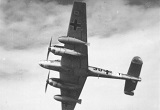
|
Analysis of Messerschmitt Me 110 Part 1 of 2(English)
199 pages
An analysis of a captured Messerschmitt Bf 110 (erroneously referred to here as "Me 110") prepared by Vultee Aircraft Co. for the United States Government.
|

|
Analysis of Messerschmitt Me 110 Part 2 of 2(English)
173 pages
The Messerschmitt Bf 110, also known as Me 110, is a twin-engine heavy fighter and fighter-bomber developed in Nazi Germany in the 1930s and used by the Luftwaffe and others during World War II. It was armed with two MG FF 20 mm cannons, four 7.92 mm MG 17 machine guns, and one 7.92 mm MG 15 machine gun or twin-barrel MG 81Z for defense.
|
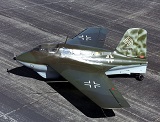
|
Messerschmitt Me 163 Komet Aircraft Handbook (German)
90 pages
The Messerschmitt Me 163 Komet, designed by Alexander Lippisch, was a German rocket-powered fighter aircraft. It is the only rocket-powered fighter aircraft ever to have been operational and the first piloted aircraft of any type to exceed 1000 km/h in level flight. Its design was revolutionary and its performance unprecedented. German test pilot Heini Dittmar in early July 1944 reached 700 mph, an unofficial flight airspeed record unmatched by turbojet-powered aircraft for almost a decade. Over 300 aircraft were built, but the Komet proved ineffective in its dedicated role as an interceptor aircraft and was responsible for the destruction of only about nine to eighteen Allied aircraft against ten losses. In addition to combat losses, many pilots were killed during testing and training.
|

|
Messerschmitt Me 262 Schwalbe Flight Manual (German)
24 pages
The Messerschmitt Me 262, nicknamed Schwalbe (German: "Swallow") in fighter versions, or Sturmvogel (German: "Storm Bird") in fighter-bomber versions, was the world's first operational jet-powered fighter aircraft. Design work started before World War II began, but problems with engines, metallurgy and top-level interference kept the aircraft from operational status with the Luftwaffe until mid-1944. The Me 262 was faster and more heavily armed than any Allied fighter, including the British jet-powered Gloster Meteor. One of the most advanced aviation designs in operational use during World War II, the Me 262's roles included light bomber, reconnaissance and experimental night fighter versions.
Me 262 pilots claimed a total of 542 Allied aircraft shot down, although higher claims are sometimes made. The Allies countered its potential effectiveness in the air by attacking the aircraft on the ground and during takeoff and landing. Engine reliability problems, from the pioneering nature of its Junkers Jumo 004 axial-flow turbojet engines—the first ever placed in mass production—and attacks by Allied forces on fuel supplies during the deteriorating late-war situation also reduced the effectiveness of the aircraft as a fighting force. In the end, the Me 262 had a negligible impact on the course of the war as a result of its late introduction and the consequently small numbers put in operational service. |
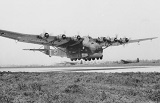
|
Messerschmitt Me 323 D-1 Gigant Operating Instructions (German)
45 pages
The Messerschmitt Me 323 Gigant ("Giant") was a German military transport aircraft of World War II. It was a powered variant of the Me 321 military glider and was the largest land-based transport aircraft of the war. A total of 213 are recorded as having been made, a few being converted from the Me 321.
|
